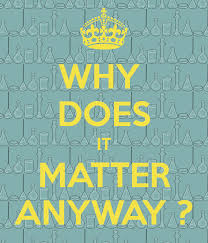Rabbeinu Yona
The perush of the students of Rabbeinu Yona that appears on the Rif in the back of Masechet Berachot is one part commentary and two parts musar. In his elaboration on R. Yochanan’s praise that one can achieve entry into the world to come (Berachot 4b), R. Yona offers two different values that undergird the beracha of geula. It is important to note from outset that, as opposed to all of Rashi’s ideas that see the beracha as a preparation for the Amida, R. Yona sees inherent value in the beracha itself.
 Rabbeinu Yona begins his analysis with a statement about the nature of prayer as service:
Rabbeinu Yona begins his analysis with a statement about the nature of prayer as service:
רבינו יונה על הרי”ף ברכות ב:, איזהו בן העוה“ב זה הסומך גאולה של ערבית לתפלה של ערבית.
ואומר מורי הרב שהטעם שזוכה לשכר גדול כזה מפני שהקב”ה כשגאלנו והוציאנו ממצרים היה להיותנו לו לעבדים…ובברכת גאל ישראל מזכיר בה החסד שעשה עמנו הבורא. והתפלה היא עבודה. כדאמרינן (בבא קמא דף צ”ב:)…וכשהוא מזכיר יציאת מצרים ומתפלל מיד מראה שכמו שהעבד שקונה אותו רבו חייב לעשות מצות רבו כן הוא מכיר הטובה והגאולה שגאל אותו הבורא ושהוא עבדו ועובד אותו. וכיון שמכיר שהוא עבדו מפני שגאלו ועושה רצונו ומצותיו נמצא שבעבור זה זוכה לחיי העולם הבא.
Talmidei Rabbeinu Yona, Rif Berakhot 4b, eizehu ben ha-olam ha-ba…
And my teacher the master said that the reason that one merits so greatly is that when the Holy Blessed One redeemed us and took us out of Egypt were were to be to Him as slaves…And in the beracha of Ga’al Yisrael we mention the loving kindness that the Creator did on our behalf. And Tefila is service (avoda – from the root for the word slave) as we are taught in Bava Kama 82b … And when you mention the Exodus from Egypt and pray immediately you show that just like a slave who has been acquired by his master is obligated to what his master commands so too you recognize that you are God’s slave and must worship Him. And once you recognize that you are God’s servant, because God redeemed you, you will do God’s will and His commandments – and because of this you can merit to live in the World to Come.
The first reason offered by R. Yona is that the beracha of geula reminds us that we must serve God. When we recall the miracles of the Exodus, we imagine what it was like to be slaves. When God redeemed us, we then became enslaved to God. This is a tough metaphor in the 21st century. Living with a foundation of commandedness is an essential component of religious life. However, the image of master-slave does not resonate with many people today and may even seem disturbing.
While the master-slave image may be difficult, the awareness that God and halakha have a claim on my life, my behavior, is essential. The beracha of geula here stands apart from the Amida as an expression of a core value of Jewish life: God is the commander and we are commanded. As opposed to all three of Rashi’s approaches (insert link), R. Yona sees the beracha of geula as expressing its own core value. The reason that it is juxtaposed to the Amida is simply to remind us of that same idea – that we must serve God.
Let us now turn the R. Yona’s second answer:
ועוד אמר מורי נר”ו טעם אחר מפני שכשמזכיר גאולת מצרים ומתפלל מיד הוא מראה שבוטח בה’ בתפלה כיון שמבקש ממנו צרכיו. שמי שאינו בוטח בו לא יבקש ממנו כלום…וכיון שמזכיר עכשיו אותה הגאולה שבטחו אבותינו בה’ והצילם ומתפלל מיד נמצא שגם הוא בוטח בו שיענה אותו כמו שענה לישראל בעבור שבטחו בו. ומפני זה מזכיר אותה הגאולה ומתפלל מיד. והבטחון הוא עיקר היראה והאמונה ולפיכך זוכה בסיבתו לחיי עולם הבא:
And my teacher also said another reason [for the great rewards of linking geula to Tefila]. Because when you mention the exodus from Egypt and immediately make requests in Prayer you show that you have faith in God. For you would not ask something on someone in whom you had no faith. And since you mention the same redemption that caused our ancestors to have faith in God who had saved them, and then pray immediately, behold you must have faith that God will answer you as was done for the Israelites. And because of this you mention the same redemption and then pray immediately. And faith (trust, בטחון) is the foundation of fear (יראה) and belief (אמונה). And therefore, you merit a place in the World to Come.
In this second answer, R. Yona focuses on faith / trust (בטחון, bitachon) as the key theme of the beracha of geula. The miracles of the Exodus inspire total faith and trust in God. The way that faith is expressed is through the thirteen central petitions of the Amida. R. Yona points out that we only ask for anything from a person or a being whom we think has the power to grant our requests. Simply by virtue of asking for health, prosperity and peace, we show our faith in God.
In the second to last sentence, R. Yona makes a fascinating claim that faith serves as the foundation of fear and belief. Prior to believing in God, we must first have faith in God. Perhaps in R. Yona’s calculus, belief is something that can be proved or disproved while faith precedes those arguments. Here we see R. Yona’s work on the Rif as very much a book of musar or Jewish thought.
In this second formulation, R. Yona moves towards Rashi’s idea that the beracha of geula is meant to prepare us for the encounter of the Amida. By reminding ourselves of the miracles of the Exodus, our faith in God grows such that it now makes sense to petition God for our human needs.
 Our Halakhic analysis of the requirement to move quickly from the beracha of geula to Tefila began with the Gemara in Berachot 4b that introduced the debate between R. Yochanan and R. Yehoshua b. Levi:
Our Halakhic analysis of the requirement to move quickly from the beracha of geula to Tefila began with the Gemara in Berachot 4b that introduced the debate between R. Yochanan and R. Yehoshua b. Levi: Rabbeinu Yona begins his analysis with a statement about the nature of prayer as service:
Rabbeinu Yona begins his analysis with a statement about the nature of prayer as service:
